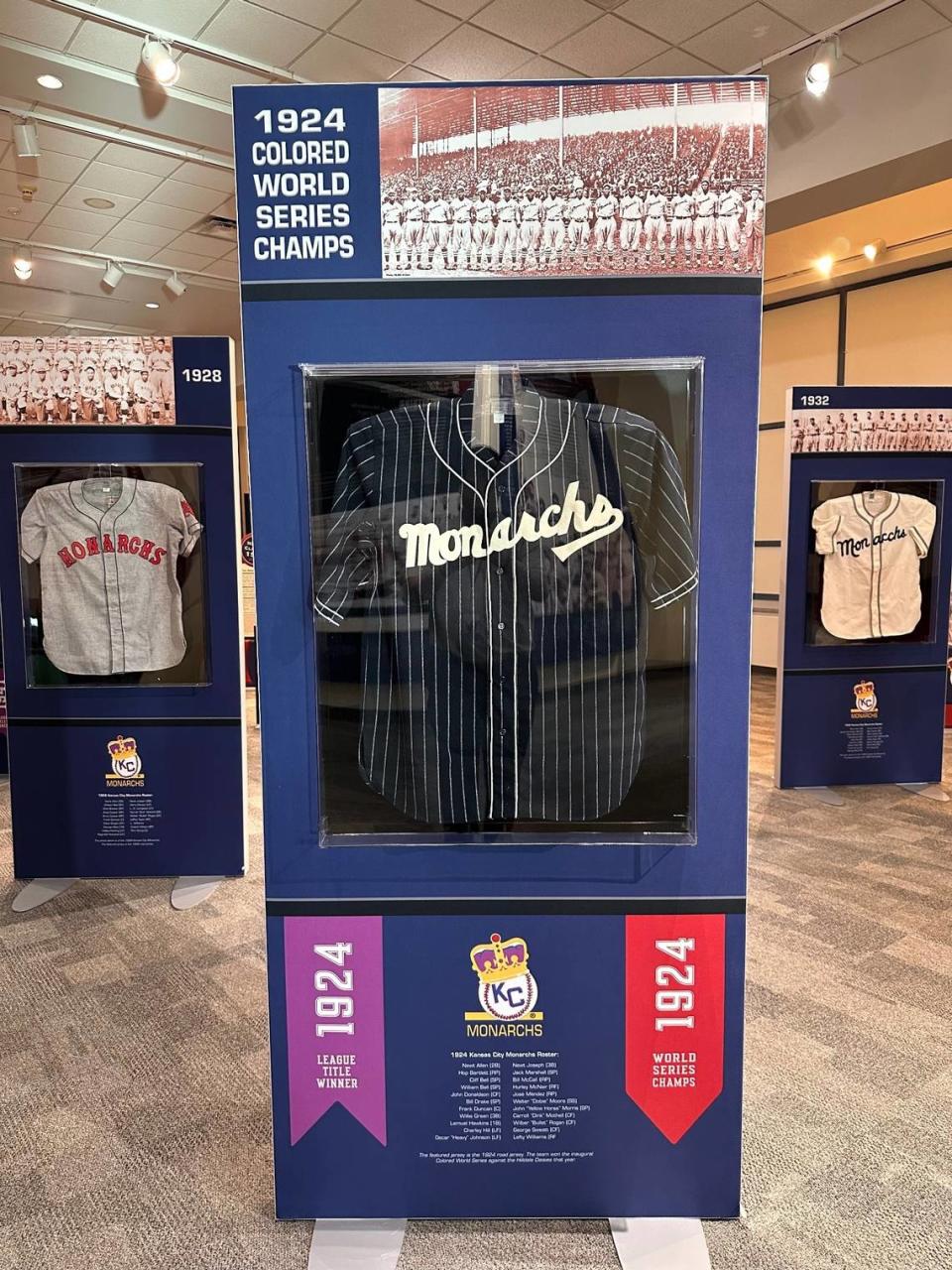‘Kings of KC’ exhibit honoring Kansas City Monarchs opens at Negro Leagues Baseball Museum
- Oops!Something went wrong.Please try again later.
A podium placed just inside the entryway at the Negro Leagues Baseball Museum sat empty for about an hour before the museum’s president, Bob Kendrick, gave his opening address.
It was Friday the 21st — two days after Juneteenth — and an exhibit honoring the 100th anniversary of the Kansas City Monarchs winning the first-ever “Colored World Series” was set to be unveiled to the public for the first time. That exhibit highlights the longstanding history of “The Kings of KC” and was aptly named as such.
And as it came time to unveil the exhibit, Kendrick said it couldn’t have come at a better time.
MLB recently announced the integration of its record books — adding Negro Leagues stats to the MLB history books. Kendrick certainly helped play a role in advocating for that.
A major-league game between the St. Louis Cardinals and San Francisco Giants meant to resemble that of a Negro Leagues game was held not two days before. Kendrick was there, too.
Safe to say, he’s been busy.
“I am still just elated,” Kendrick said at the podium ahead of the exhibit’s unveiling. “I’m exhausted, but it’s such a gratifying level of exhaustion because we’re seeing these milestone events take place. It is raising the level and the profile of this museum, and at what a great time.”
The exhibit features cutouts of some of the Monarchs’ most influential players. On the walls are newspaper clippings with different stories of the team on its path to an eventual championship.
As detailed as the exhibit was, Kendrick felt there could have been even more to tell.
“Quite frankly, we could have done an entire museum about the history of the Monarchs,” he said. “But we wanted to make sure that we told the general history as the national voice for this history.”
Kendrick, as the curator, had the arduous task of selecting which stories were the best to include. He wanted to do the team (and its history) justice while also presenting the exhibit in a way that people would feel connected to it.
That was also the case for the museum’s general counsel and director of listening, Tom Busch.
“This exhibit is really a golden opportunity to recognize the (Monarchs’) greatness by focusing in on this first World Series championship,” Busch said. ”That, and all of the great players that were not only playing on this team, but those that followed.
“It’s just a wonderful opportunity to bring everyone’s focus back to where things started.”
Part of the work of the museum, Busch continued, is the unfortunate reality that many only learn about the Monarchs and key figures from the Negro Leagues for the first time when they step inside. As a storied franchise, Busch said, the Monarchs still don’t quite receive due recognition.
That said, Kendrick emphasized the players who are still around from that time need neither validation nor pity.

“They knew how good their league was,” Kendrick said. “And quite frankly, the major leaguers knew how good they were. There was a natural feeling about it. They weren’t seeking validation, but for historical validation, this was tremendously significant. ... It was well-deserved, well-earned recognition.”
A few minutes after Kendrick finished his opening remarks, the podium in the lobby of the Negro Leagues Baseball Museum sat empty again. Those in attendance got a first look at the exhibit, which will be open through October.
For some, it was the first time learning about some of the stories that accompanied the franchise, such as the World Series that “almost didn’t happen” and even the role that Jazz music played for those on the roster.
For others, “The Kings of KC” exhibit was another trip down memory lane. It was a reminder of the rich history that made up one of the city’s most accomplished teams. It was proof that the Monarchs were exactly that: kings.
And for Kendrick, it’s a necessary way to further spread awareness and put some of who he called the best baseball players in history back in the spotlight.
“There are those who will call the Monarchs the New York Yankees of the Negro Leagues,” Kendrick said. “But there are others who will call the New York Yankees the Kansas City Monarchs of Major League Baseball.
“They were that good.”
“The Kings of Kansas City” will be open to the public for free until October 31.

